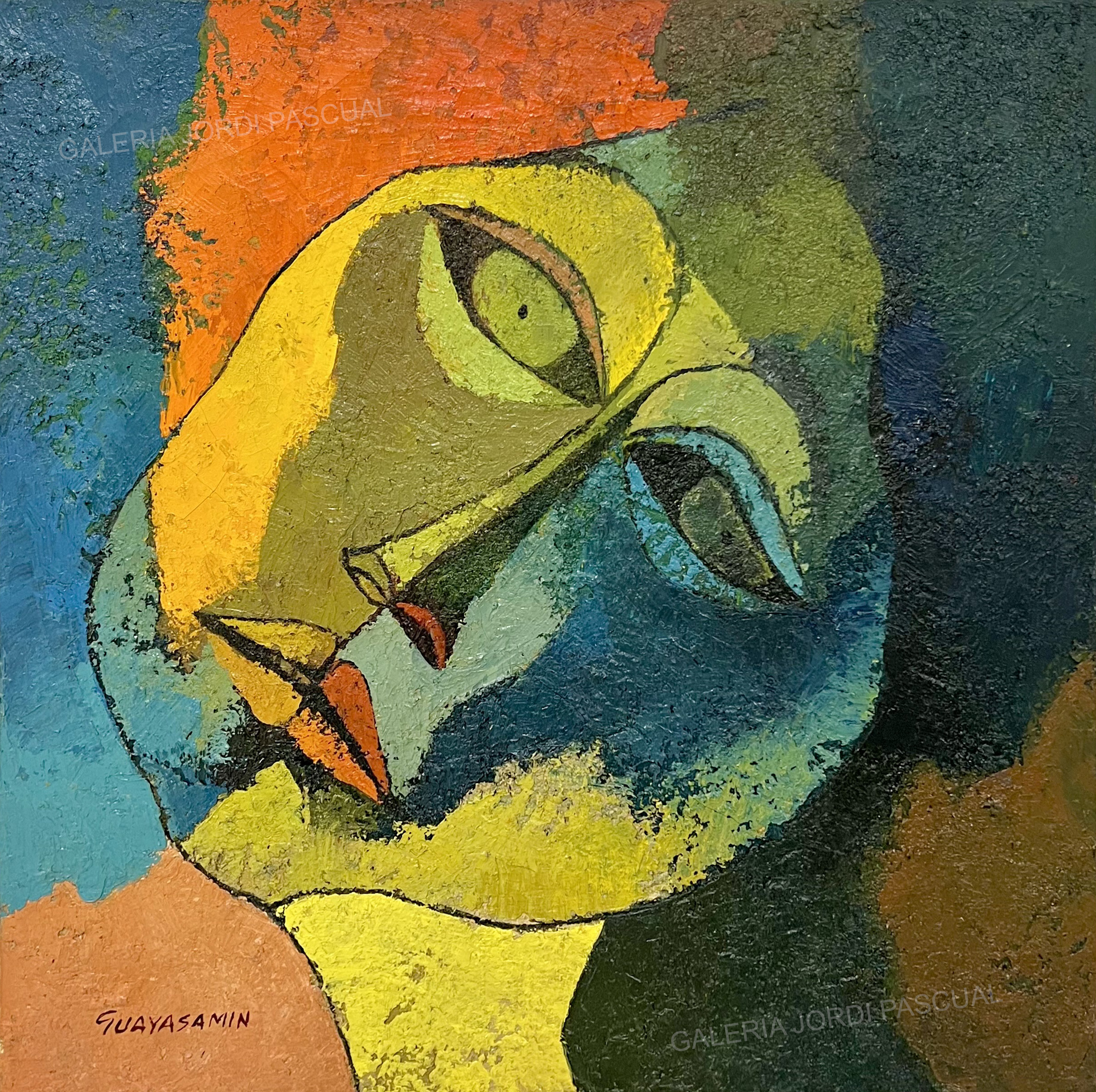Guayasamín, Oswaldo

Oswaldo Guayasamín was born in Quito in 1919. He began painting in his childhood and selling his works to tourists who visited the city. At 19, he was accepted at the Escuela de Bellas Artes of Quito to study painting and sculpture. However, soon after he graduated, he went to the Escuela Indigenista, where he adopted the style that would define him for the rest of his career.
His first exhibition in 1942, created controversy due to its strong social critique. That same year, he moved to Mexico and collaborated with the muralist Orozco, who inspired him to incorporate angular and geometric figures into his paintings. Throughout the rest of this decade, he traveled to the United States and a big part of Latin-America. His time in Latin-America led him to create his first ever series, titled Huacyñan (The road to crying), which explored the themes of indigeneity, blackness, and mestizo identity. This paved the way for his entry into the international artistic scene, including the III Bienal Hispanoamericana de Arte in Barcelona, where he won the Gran Premio de Pintura.
Through this series, he officially established his artistic identity, which combined elements of cubism, expressionism, and indigeneity. Guayasamín always explored the horrors, disasters, and dramas of society, with a humanist and intimate perspective. His paintings are characterized for expressing strong emotions, but always with a poetic and empathic approach.
In 1958, he painted two very important murals in Ecuador: El Descubrimiento del Rio Amazonas and Historia del Hombre y la Cultura. However, during the following years he dedicated his time to painting his most renowned series, La Edad de la Ira. This series aimed to depict the impacts of various 20th century events, such as the Spanish Civil War, the atomic bomb, or the invasion of Playa Girón in Cuba. Guayasamín displayed these works for the first time in 1968 at the Museo de Bellas Artes of Ciudad de Mexico. Nevertheless, due to its success, these were also exhibited at the Palacio de la Virreina in Barcelona, at the National Galleries of Prague and at the Museum of Modern Art in Paris.
At the end of the 70s, the Ministerio de Relaciones Exteriores of Quito, curated a retrospective, that was later also presented in various museums in Spain. In 1982, he painted a mural titled España-Hispanoamérica, at the Barajas airport in Madrid.
The last series he created, Mientras Viva Siempre te Recuerdo, was an homage to all mothers around the world, but especially his. The figures of “the mom” become symbols for the defense of life, land, and human rights. Before his passing in 1999, the Cámara de Representantes of Ecuador, established the Fundación Guayasamín, to which the artist donated a significant portion of his work.


